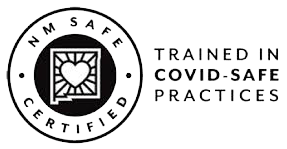
It’s an idea that would transform the old Route 66 in Albuquerque.
Buses would travel down the middle of Central Avenue as passengers wait under canopy-covered stations. On most stretches, cars would be limited to one or two lanes each way. Wide sidewalks and new landscaping would flank the roadway.
Whether any of it will happen depends a bit on some behind-the-scenes work underway this summer at City Hall.
Mayor Richard Berry’s administration is preparing applications for federal funding aimed at helping pay for Albuquerque Rapid Transit, or ART – a 10-mile, $100 million network of express buses along Central Avenue between Louisiana and Coors.
The goal is to secure about $80 million in federal funds, with the remainder from the city or other sources.
“It would be the next logical step in public transportation, and it can be done for pennies on the dollar compared to light rail and trolleys,” Berry said in an interview.
The idea has broad support at City Hall. City councilors have already authorized bonds that would provide about $13 million for the project.
But there’s no getting around the dramatic change it would bring to Central Avenue, and the neighborhoods and businesses along the old Route 66. Central is the longest urban stretch of Route 66 still intact.
The buses would have their own dedicated lanes, one in each direction, throughout 90 percent of the route. That would mean fewer lanes for cars, trucks and other traffic.
Some anxiety
Some business owners are apprehensive about the idea.
“Who’s going to ride it?” asked Larry Koch, owner of the shop Larry’s Hats in Nob Hill.
He and other business owners wonder whether their customers will really start taking the bus. Koch also fears the potential noise and traffic congestion that would come from reducing the lanes of traffic for other vehicles.
Patrick Frey, who owns BZ Skateshop in Nob Hill, said Albuquerque is a “cruising, low-rider town.” He hopes the project succeeds, he said, but he’s skeptical about reducing traffic capacity on Central.
There aren’t enough north-south transit connections to get people to Central in the first place, he said, even if they want to link up with the proposed route.
“We’re a very spread-out town,” Frey said.

Others are more supportive. They envision a better pedestrian environment that will make it more pleasant for people to stroll between restaurants and shops.
Todd Clarke of New Mexico Apartment Advisors said apartment owners and developers are generally excited about the prospect of a big public investment in Central Avenue. Better transit options make apartments more attractive to residents, resulting in higher rents, he said.
“This investment, followed by the unified development ordinance (a new zoning effort), is really going to lead to a lot more densification,” Clarke said. “Even if you’re not in the corridor, that should get people excited.”
Higher densities help make an area more attractive to companies like, say, a Nordstrom, he said. (A Nordstrom Rack, an “off-price” division of the retailer, is already planned for the Winrock area in Uptown.)
Key time frame
Albuquerque Rapid Transit is entering a critical phase.
The mayor is asking city councilors to approve about $1.2 million that would serve as matching funds for about $6.6 million in federal grants Albuquerque is seeking.
Another key application – for perhaps $70 million – is due in August and a decision could come in the fall.
Berry said he has visited with leaders in the Federal Transit Administration repeatedly to put Albuquerque in a better position to secure funding.
“I think our project is seen as one of the premier projects in the United States,” Berry said.
That’s at least partly because of the way the bus lanes and stations would stand out, in combination with other improvements.
“This is not just the bus,” Berry said. “It really looks and feels like a public transportation system.”
If all goes well, passengers could be boarding the bus in September 2017.
The mayor said he likes that the local money, perhaps $20 million, can be leveraged to generate about $80 million in federal funds. He said he hopes the project will trigger private development along the route, which includes the International District, Nob Hill, the University of New Mexico, Downtown, the BioPark and west Central.
But Paul Gessing of the Rio Grande Foundation, a research group that advocates limited government and individual liberty, said the funding isn’t free, even if some of it comes from the federal government.
“It’s not the way these projects should be done,” he said. “We shouldn’t be pilfering money out of other people’s pockets.”
Gessing is also concerned about reducing the lanes of traffic.
“I think it’ll actually hurt mobility,” he said.
If the city builds the system, it will also have to pay to operate it – a cost estimated at $2 million a year, though federal funding might offset that, too, in the early years, according to the city.
“I just think, as mayor of our city, that it could really make a big difference,” Berry said, and “I’m a fiscal conservative.”
City Councilor Trudy Jones, who at the mayor’s request is sponsoring two resolutions to authorize federal applications, said no public transportation system ever “breaks even,” though it’s important to provide one.
“I think it will make life easier for a huge number of our citizens who rely on public transportation,” Jones said.
About ABQ Rapid Transit
- It’s intended to mimic light rail, only on rubber wheels.
- The buses travel in a dedicated lane, allowing them to bypass traffic congestion. In short stretches, where a separate lane isn’t practical, they may mingle with regular traffic.
- The design would vary along the route. In the Nob Hill area, for example, the proposal is to reduce the lanes of traffic from two each way to just one each way, with the dedicated bus lanes in the middle of the street. Wider sidewalks, on-street parking and trees would make it a friendlier place to walk. Farther east on Central and in a stretch on West Central, the three lanes of traffic now going each way would be reduced to two lanes each way to make room for the buses and landscaping.
- The buses communicate with traffic signals to reduce the wait times at red lights.
- Passengers board the bus from raised platforms that are level with the floor of the bus, as on a subway. Stations would be spaced out roughly every one-quarter to one-half mile.
- Passengers buy tickets or passes at kiosks before getting on the bus, shortening the time each bus stays at a stop. It would cost $1, like other buses.
- The city would still operate the Route 66 bus route, which provides more frequent stops.
- If funding goals are met, major construction could begin in about a year and service could start in 2017.
By: Dan McKay (Albuquerque Journal)
Click here to view source article.


